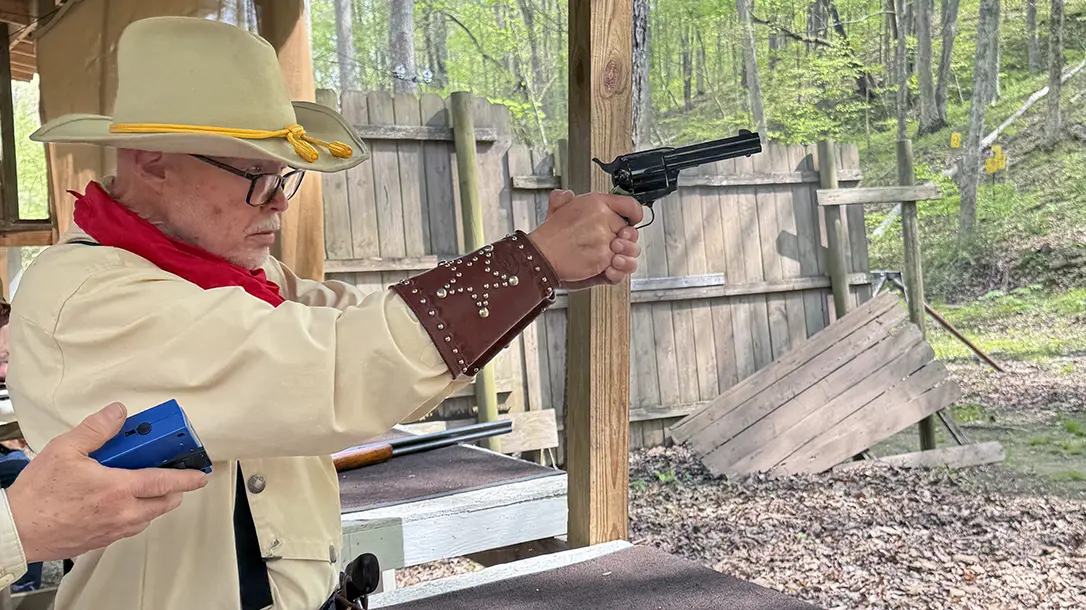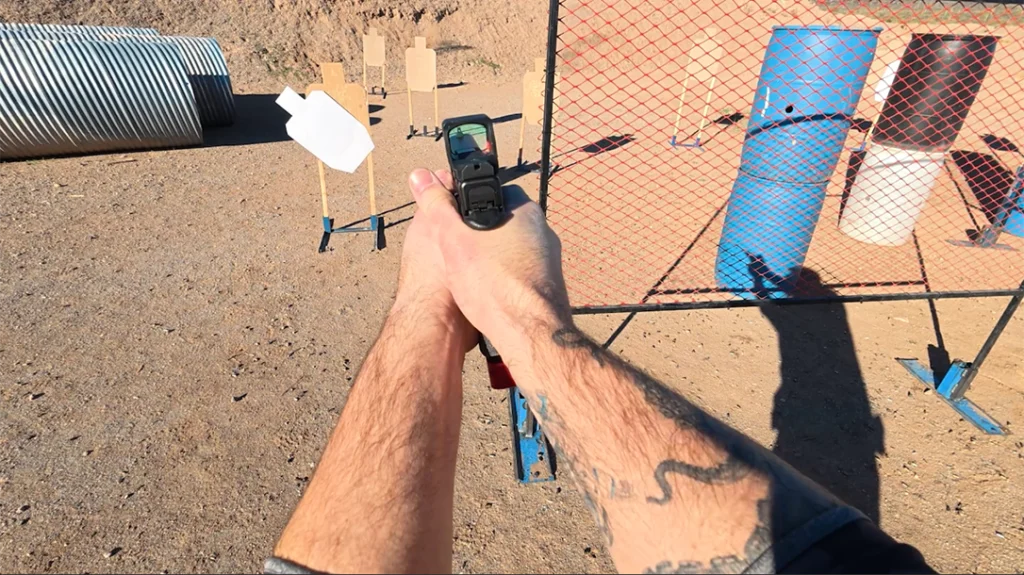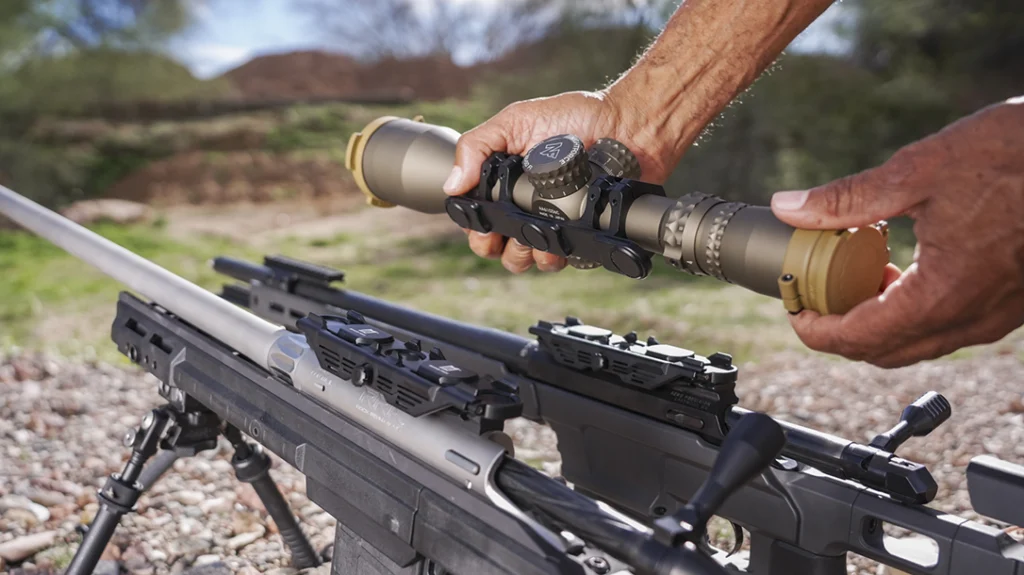In 2005, Taurus International introduced a new centerfire single-action (SA) revolver into its lineup of handguns. A South American company, Taurus called it the Gaucho. To be honest, I never did an evaluation on one or even shot one. Obviously aimed at the Cowboy Action Shooting (CAS) market, I saw a few competitors using them. There was mention of some issues with this sixgun in certain circles, but that’s just hearsay. In any event, the Gaucho went away in 2009. Then 15 years later, the Taurus Deputy entered the market.
Enter the Taurus Deputy
Those familiar with the Gaucho will immediately note the similarity in appearance. Both have a transfer-bar action that allows the shooter to safely carry all six chambers in the cylinder loaded. Of course, CAS competitors always keep the chamber under the hammer empty; that’s the rule. I’m sure this new wheelgun has whatever problems that were inherent with the Gaucho all worked out; we’ll discuss that later.
The biggest differences seem to be aesthetic; the markings are more appealing and better executed, and the Taurus emblem on the checkered polymer grip panels has been updated. Most noticeable is the quality of the finish on the Deputy. It is all-alloy steel and the metal has been polished to a high luster and a deep blue applied.
Advertisement — Continue Reading Below
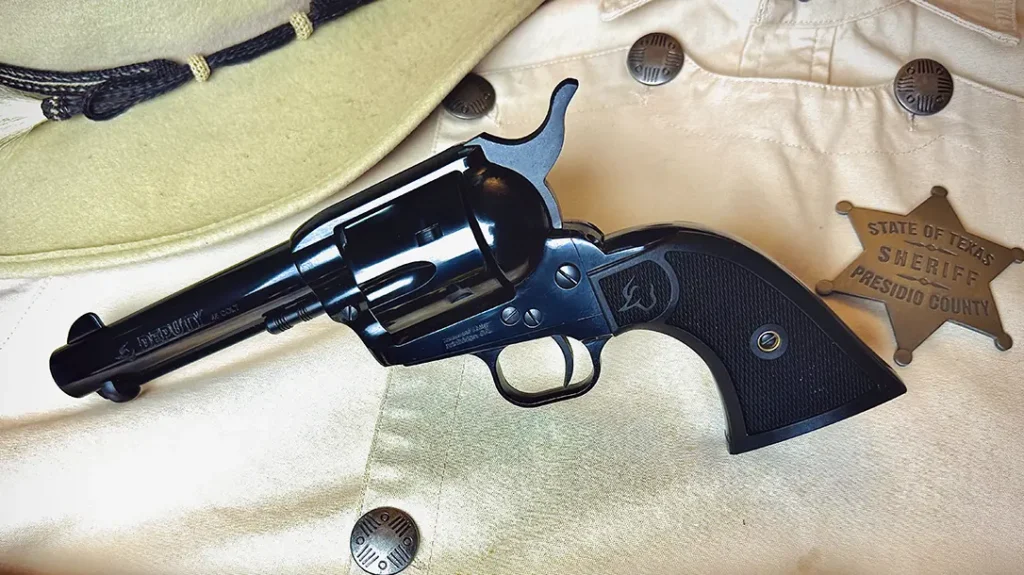
A Distinct Deputy
One difference I noted was the long cylinder base pin on the Deputy. I don’t know the why or wherefore, but it protrudes from the frame a good inch. This does make it easier to pull out when the cylinder is being removed for cleaning. True SA aficionados will appreciate the traditional action; when you thumb the hammer back to full-cock, you get the distinctive “four clicks.” Also traditional is the fact you must put the Deputy on half-cock so you can turn the cylinder clockwise for loading. The hammer spur is full-sized and checkered for good thumb purchase. The trigger is smooth-faced and 0.25-inch in width. Both hammer and trigger are matte blue. Fit and finish overall was first rate.
At this time, the Taurus Deputy is available in the two most popular CAS cartridges; the .357 Magnum/.38 Special and .45 Colt. It’s being offered with 4.75- and 5.5-inch barrel lengths. The test gun sent to me was in .45 Colt and had a 4.75-inch barrel. Being all-steel, it has an empty weight of 36.4 ounces; which certainly helps in the recoil and muzzle flip department when shooting the big .45 Colt cartridges. It came in a black plastic, hinged-top carrying case, with a foam-rubber lined interior. Inside was an owner’s manual and security padlock.
Advertisement — Continue Reading Below
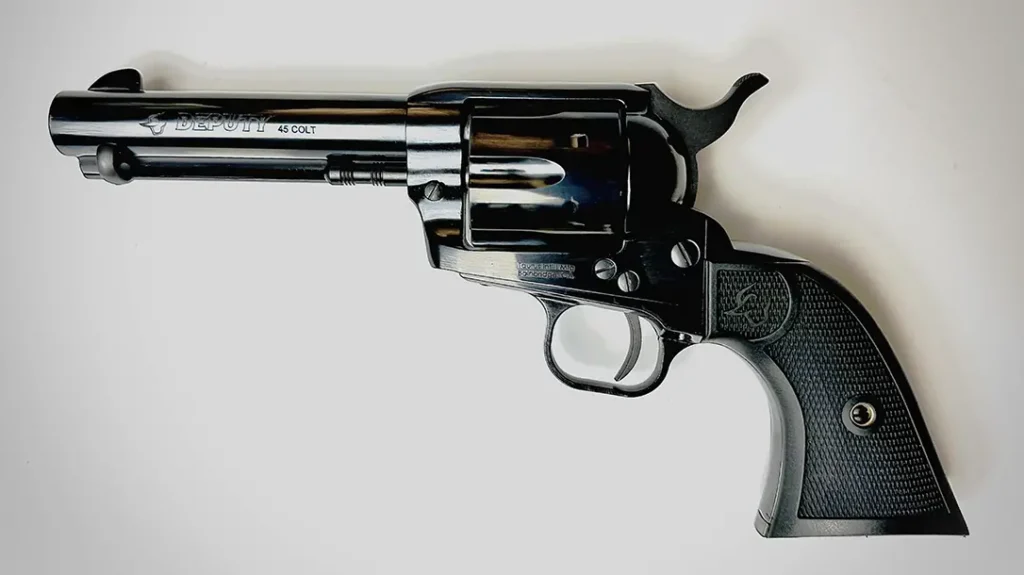
Prepping for the Range
I assembled five different .45 Colt cartridges to use in the Deputy T&E; all are of the “cowboy” type with lead bullets. The first was from Black Hills and are loaded with a 250-grain round nose, flat-pointed (RNFP) bullet. Second up was Cowboy Action cartridges from Fiocchi. This cartridge has a 250-grain RNFP bullet with a black “protective coating” to reduce barrel fouling. From Hunting Shack Munitions (HSM) was Cowboy Action Cartridges with a 200-grain RNFP bullet. Remington provided their Performance Wheelgun cartridges that carry a 250-grain RNFP bullet that most closely resembles the bullet used in the Old West. Last was Winchester Cowboy Action loads that also have a 250-grain RNFP bullet.
As I planned to use the Taurus Deputy in a CAS match, I needed a holster and cartridge belt rig. Galco to the rescue. For a holster, I selected their Model 1880, a holster reminiscent of the rigs worn in the Western TV shows of the 1950’s-60’s. Made of premium full-grain, steerhide, it comes dyed a light tan color. It’s based on the Mexican Loop design, but doesn’t have a visible skirt. It’s a high-ride, will fit belts up to 3 inches wide, and has a hammer thong retention strap. I mated it with the Model 1880 cartridge belt. The 3-inch belt is constructed from premium center-cut steerhide; which has a darker natural color. It provides an attractive contrast with the tan premium steerhide billets and cartridge loops. A nickel-plated brass buckle is standard.
Advertisement — Continue Reading Below
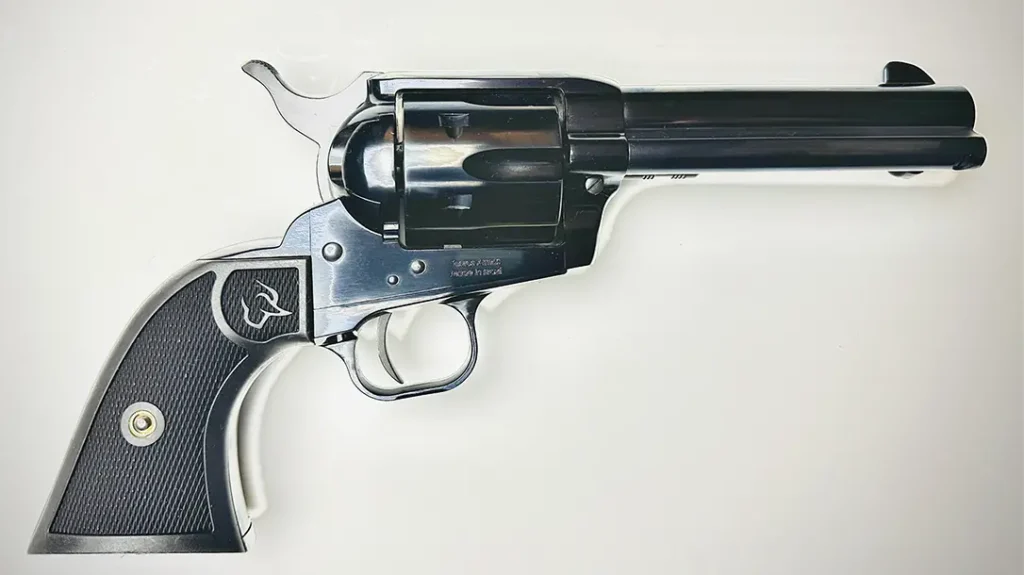
Home on the Range
Job one on the square range was to unlimber my Oehler Model 35P chronograph and get some muzzle velocity reading on the .45 Colt test cartridges shot through the 4.75-inch barrel of the Taurus Deputy. As expected of “cowboy cartridges,” none broker the sound barrier. You can see the data in the performance chart. Next, was the accuracy potential evaluation. Having been a CAS competitor for some 32 years, I decided that a reasonable distance would be 36 feet (12 yards) based on the usual target placement on mani match stages. Oval-shaped bulls-eye targets with a red center were utilized.
Shooting was from the bench, using a sandbag rest. Three, five-shot groups were shot with each of the test cartridges. The tightest and one of the best centered groups measured 1.02 inches and was made using the Winchester Cowboy Action cartridges. It also had the best three group average at 1.52 inches. I felt all of the groups and group averages were very good, and none of the group averages were larger than 1.89 inches. I did find that the Deputy shot 1.5-inch left and above center; so, I adjusted my aiming point to 5 o’clock, just outside the red center. The rest of the group data is included in the performance table.
Advertisement — Continue Reading Below
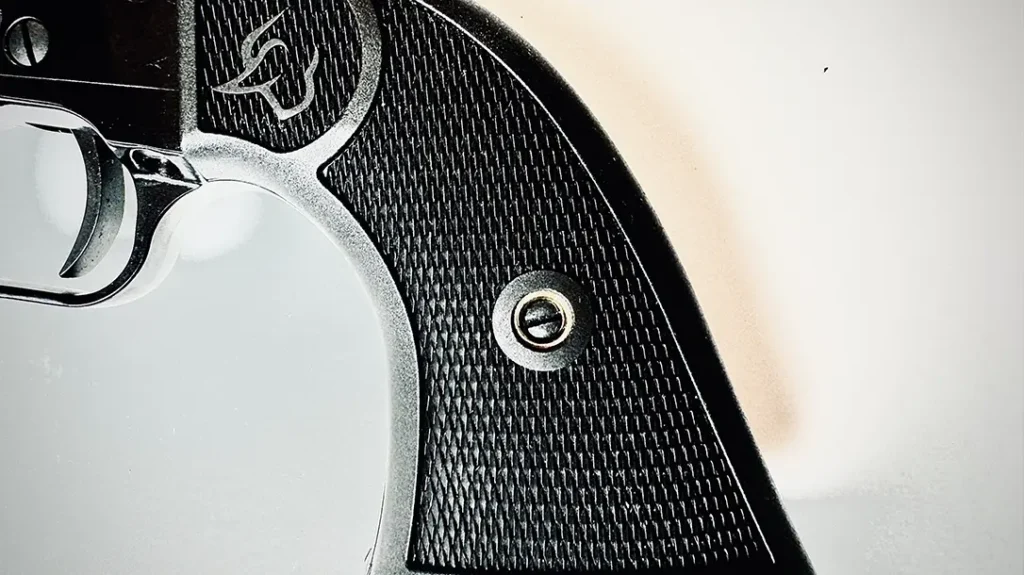
Cowboy Up Time
The real fun came a few days later when I assumed the role of LaVista Bill, dressed up in my cowboy garb and leather, and attended a shoot held by the Scarlet Mask Vigilance Society, which is an NCOWS (National Congress of Old West Shootists) club. The agenda for the day was composed of six main-match stages and I signed up to shoot in the Men’s and Women’s Four Gun Smokeless Shootist category. The NCOWS Tally Book describes this as the “Shooter uses two pistols, one shotgun, and one pistol caliber rifle. Shooters may shoot smokeless powder and may fire handguns using a two-handed grip.” As the Winchester ammo gave me the best group in the accuracy testing, I decided to use it in my sixguns during the match.
It was a pleasant sunny day at the “Cowboy Town Range” and there were enough competitors to form three shooting posses, which makes the match run a bit faster. I paired the Taurus Deputy with another SA six-shooter in .45 Colt, with a 5.5-inch barrel, and has had an “action job” to lighten the trigger pull. Turns out that most of the misses I had that day were with this hog leg, as the difference in the trigger pulls between the two guns was noticeable.
Advertisement — Continue Reading Below
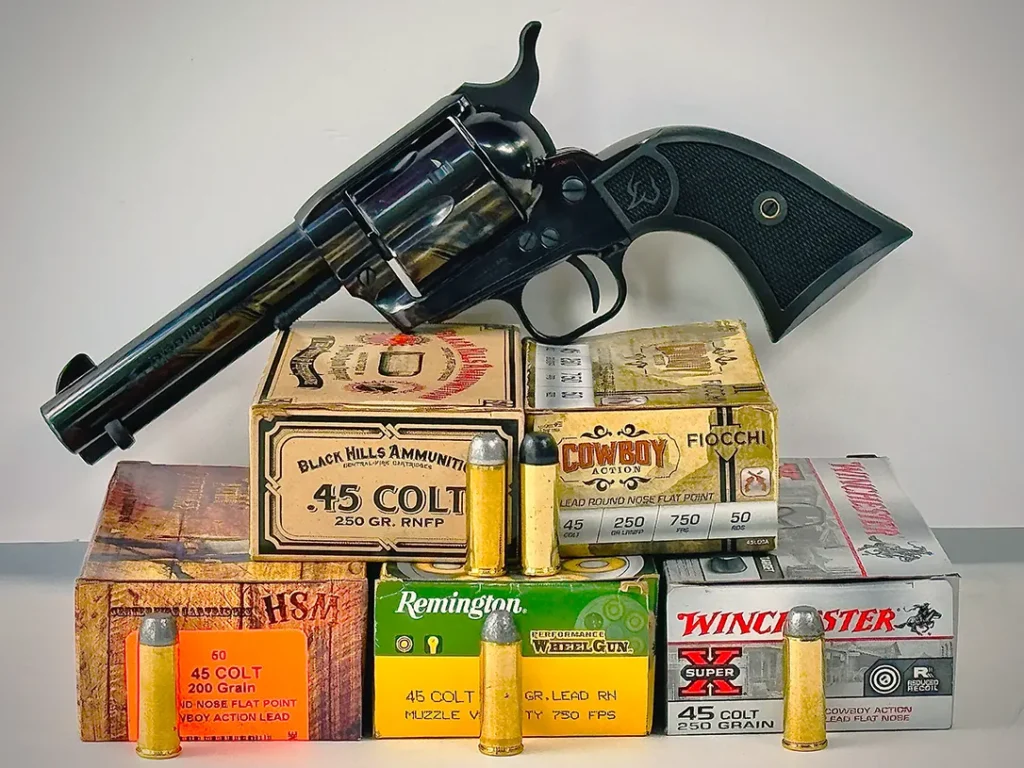
Double Up
I was also using, for the first time, an old 16-gauge double-barrel shotgun that I had inherited. It had 26-inch barrels and somewhat different handling characteristics than the short 12-gauge coach gun that I normally use. All excuses aside, I wasn’t the top-scoring shooter in my category that day. I did find that on the handgun targets, I had no misses with the Taurus Deputy; it could be that I shot it a bit more slowly than the other sixgun. Performance from the Galco Model 1880 holster and cartridge belt left nothing to be desired. The point of the whole thing was to have fun and fellowship with like-minded folks, so on a whole, the day was successful.
The Roundup
On the square range and at the cowboy shoot, the Taurus Deputy was a good performer. I found the sights provided a proper sight picture for paper-punching, yet were easy to acquire rapidly for competition shooting. The weight of the gun, plus the checkered grip panels, made for rapid-fire controllability. Empty cases ejected easily from the cylinder; I recorded no problems or malfunctions. The main issue was the action. In a word, it was “stiff.”
Advertisement — Continue Reading Below
Of course it’s a new gun, but the main spring made hammer cocking slower, and the resulting trigger pull weight was at least 5-6 pounds, with some creep. This will work itself out over time and use or perhaps a few bucks spent at the gunsmith shop. Overall, I believe the Taurus Deputy is a worthy successor to the Gaucho, and should be given earnest consideration if you are looking for a new sixgun for CAS or other shooting venture.
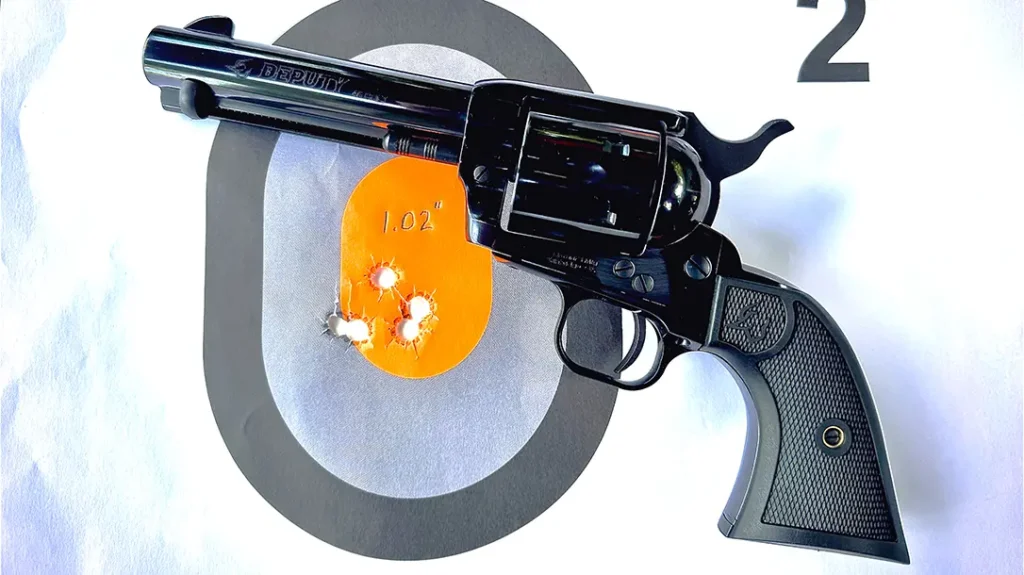
For more info, visit taurususa.com or galcogunleather.com.
Advertisement — Continue Reading Below
Taurus Deputy Specifications
- Mechanism: Single action revolver
- Caliber: .45 Colt (and .357 Magnum)
- Capacity: 6 cartridges
- Barrel: 4.75 in. (5.5 in. also available)
- Overall Length: 10.25 inches
- Empty Weight: 36.4 oucnes
- Sights: Fixed notch rear, blade front
- Finish: Polished blue steel
- Stocks: Black polymer, checkered
- MSRP: $606.99
Taurus Deputy .45 Colt Performance
| Cartridge | Ave. Velocity | Best Group | Average Group |
| Black Hills 250-grain RNFP | 691 FPS | 1.54” | 1.88” |
| Fiocchi 250-grain RNFP | 737 FPS | 1.08” | 1.71” |
| HSM 200-grain RNFP | 725 FPS | 1.42” | 1.89” |
| Remington 250-grain RNFP | 742 FPS | 1.31” | 1.53” |
| Winchester 250-grain RNFP | 746 FPS | 1.08” | 1.52” |
